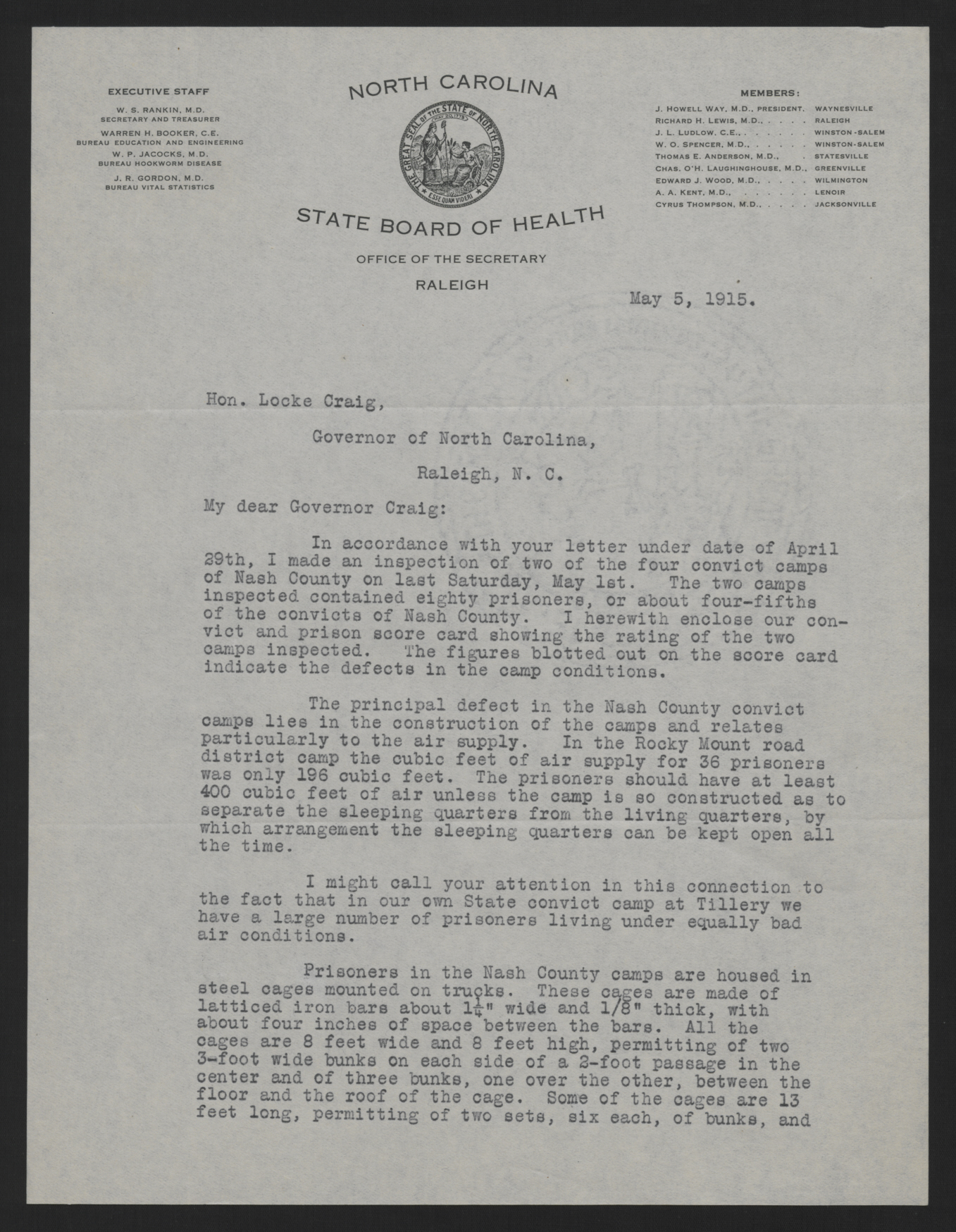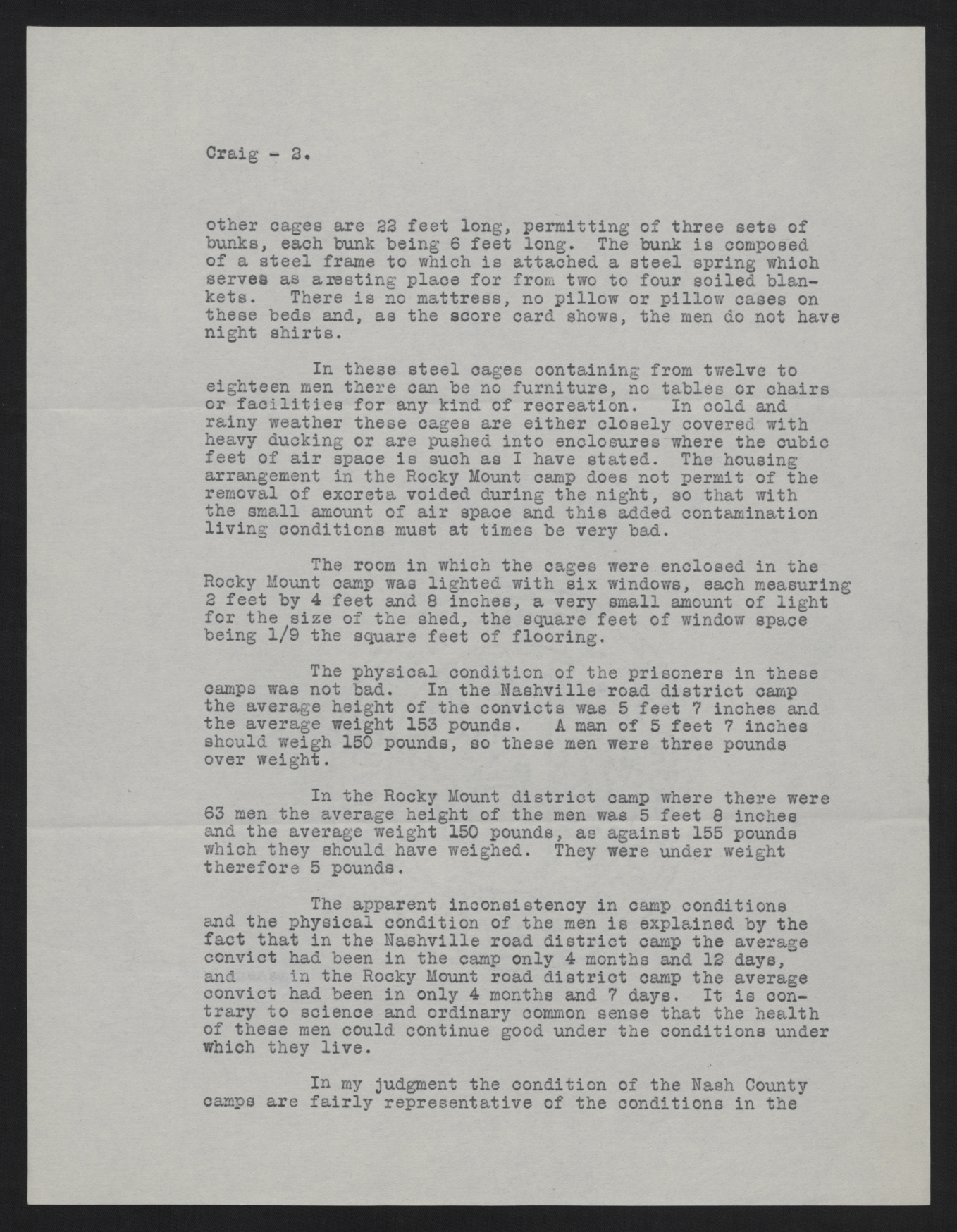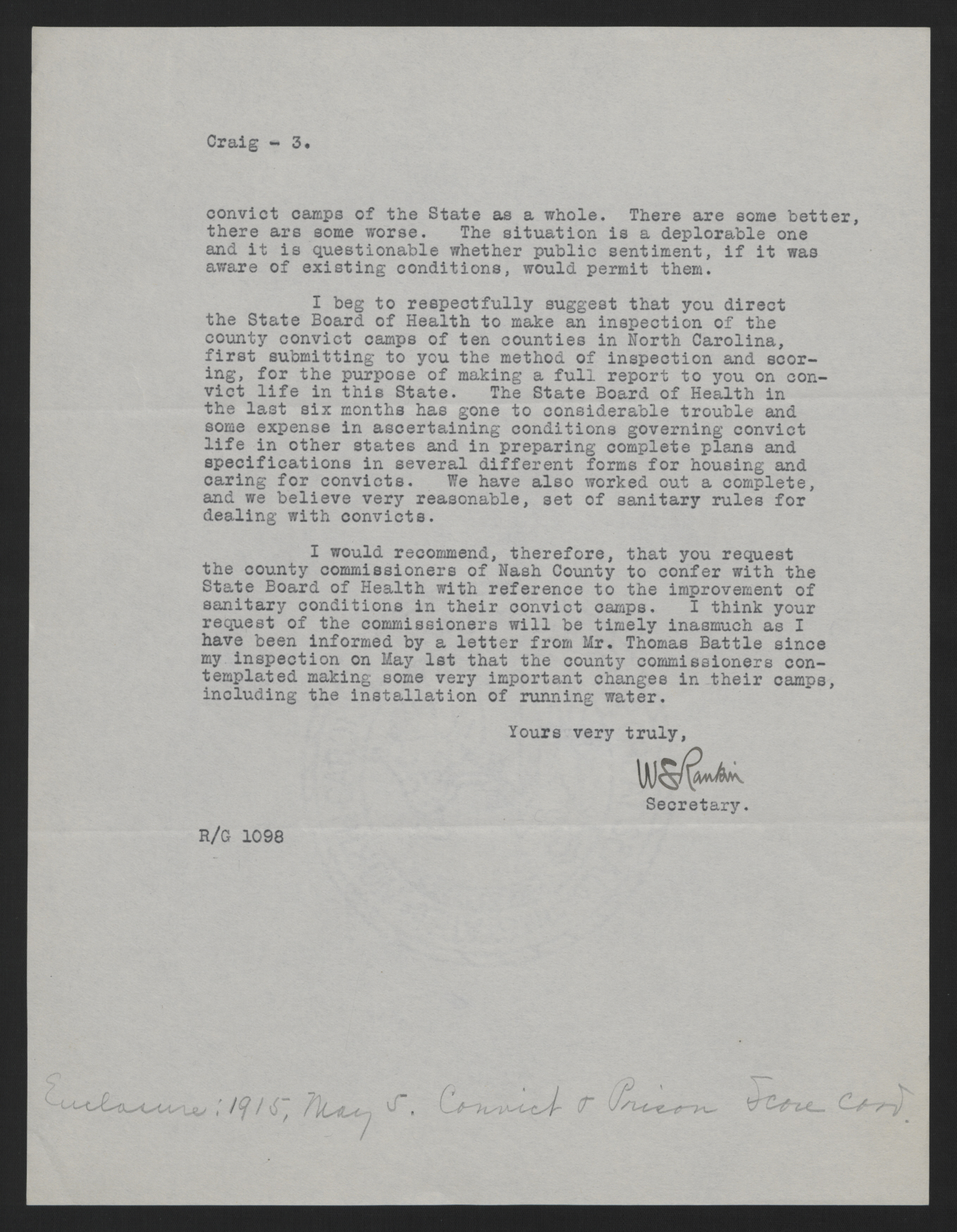NORTH CAROLINA
STATE BOARD OF HEALTH
OFFICE OF THE SECRETARY
RALEIGH
May 5, 1915.
Hon. Locke Craig,
Governor of North Carolina,
Raleigh, N.C.
My dear Governor Craig:
In accordance with your letter under date of April 29th, I made an inspection of two of the four convict camps of Nash County on last Saturday, May 1st. The two camps inspected contained eighty prisoners, or about four-fifths of the convicts of Nash County. I herewith enclose our convict and prison score card showing the rating of the two camps inspected. The figures blotted out on the score card indicate the defects in the camp conditions.
The principal defect in the Nash County convict camps lies in the construction of the camps and relates particularly to the air supply. In the Rocky Mount road district camp the cubic feet of air supply for 36 prisoners was only 196 cubic feet. The prisoners should have at least 400 cubic feet of air unless the camp is so constructed as to separate the sleeping quarters from the living quarters, by which arrangement the sleeping quarters can be kept open all the time.
I might call your attention in this connection to the fact that in our own State convict camp at Tillery we have a large number of prisoners living under equally bad air conditions.
Prisoners in the Nash County camps are housed in steel cages mounted on trucks. These cages are made of latticed iron bars about 1 1/4" wide and 1/8" thick, with about four inches of space between the bars. All the cages are 8 feet wide and 8 feet high, permitting of two 3-foot wide bunks on each side of a 2-foot passage in the center and of three bunks, one over the other, between the floor and the roof of the cage. Some of the cages are 13 feet long, permitting of two sets, six each, of bunks, and other cages are 22 feet long, permitting of three sets of bunks, each bunk being 6 feet long. The bunk is composed of a steel frame to which is attached a steel spring which serves as a resting place for from two to four soiled blankets. There is no mattress, no pillow or pillow cases on these beds and, as the score card shows, the men do not have night shirts.
In these steel cages containing from twelve to eighteen men there can be no furniture, no tables or chairs or facilities for any kind of recreation. In cold and rainy weather these cages are either closely covered with heavy ducking or are pushed into enclosures where the cubic feet of air space is such as I have stated. The housing arrangement in the Rocky Mount camp does not permit of the removal of excreta voided during the night, so that with the small amount of air space and this added contamination living conditions must at times be very bad.
The room in which the cages were enclosed in the Rocky Mount camp was lighted with six windows, each measuring 2 feet by 4 feet and 8 inches, a very small amount of light for the size of the shed, the square feet of window space being 1/9 the square feet of flooring.
The physical condition of the prisoners in these camps was not bad. In the Nashville road district camp the average height of the convicts was 5 feet 7 inches and the average weight 153 pounds. A man of 5 feet 7 inches should weigh 150 pounds, so these men were three pounds over weight.
In the Rocky Mount district camp where there were 63 men the average height of the men was 5 feet 8 inches and the average weight 150 pounds, as against 155 pounds which they should have weighed. They were under weight therefore 5 pounds.
The apparent inconsistency in camp conditions and the physical condition of the men is explained by the fact that in the Nashville road district camp the average convict had been in the camp only 4 months and 12 days, and in the Rocky Mount road district camp the average convict had been in only 4 months and 7 days. It is contrary to science and ordinary common sense that the health of these men could continue good under the conditions under which they live.
In my judgment the condition of the Nash County camps are fairly representative of the conditions in the convict camps of the State as a whole. There are some better, there ars some worse. The situation is a deplorable one and it is questionable whether public sentiment, if it was aware of existing conditions, would permit them.
I beg to respectfully suggest that you direct the State Board of Health to make an inspection of the county convict camps of ten counties in North Carolina, first submitting to you the method of inspection and scoring, for the purpose of making a full report to you on convict life in this State. The State Board of Health in the last six months has gone to considerable trouble and some expense in ascertaining conditions governing convict life in other states and in preparing complete plans and specifications in several different forms for housing and caring for convicts. We have also worked out a complete, and we believe very reasonable, set of sanitary rules for dealing with convicts.
I would recommend, therefore, that you request county commissioners of Nash County to confer with the State Board of Health with reference to the improvement of sanitary conditions in their convict camps. I think your request of the commissioners will be timely inasmuch as I have been informed by a letter from Mr. Thomas Battle since my inspection of May 1st that the county commissioners contemplated making some very important changes in their camps, including the installation of running water.
Yours very truly,
W S Rankin
Secretary.
R/G 1098






